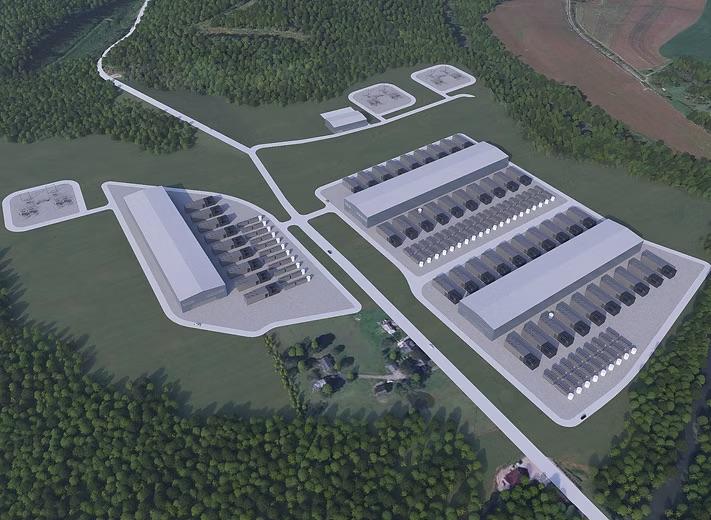
The future of the former Homer City Generating Station—previously the largest coal-burning power plant in Pennsylvania—will be transformed into a more than 3,200-acre natural gas-powered data center campus in the Pittsburgh region. The center is being designed to meet the growing artificial intelligence (AI) and high-performance computing (HPC) needs of the innovative technology companies shaping America’s digital future.
GE Vernova will provide seven high efficiency 7HA.02 hydrogen-enabled, gas-fired turbines, with the first deliveries expected to begin in 2026. The Homer City Energy Campus will be built by Kiewit Power Constructors Co., one of the leading engineering, procurement and construction (EPC) contractors in the country. Much of the critical infrastructure for the project is already in place from the legacy Homer City plant, including transmission lines connected to the PJM and NYISO power grids, substations and water access. Construction of the site is expected to commence this year and is expected to begin producing power by 2027.
William Wexler, President and CEO of HCR, stated, “This project will honor Homer City’s place in the proud history of Pennsylvania energy generation, while accelerating the state and local community’s ability to meet the needs of a rapidly shifting energy landscape. Alongside our best-in-class partners, we have been working tirelessly to ensure that Homer City’s transformation can happen as quickly and seamlessly as possible. Further, we are fully committed to maximizing the unprecedented level of economic opportunity this project represents not just for Indiana County, but for all of Pennsylvania and the Mid-Atlantic region of the country.”
Key attributes and benefits of the project are expected to include:
· Delivery of up to 4.5 gigawatts (GW) of power to support AI-driven hyperscale data centers, while reducing greenhouse gas emissions by 60–65% per megawatt hour compared to the former coal plant.
· Deployment of numerous previously secured long-lead power components coupled with sufficient generating capacity to serve multiple large data center customers and supply power to thousands of homes on the local grid.
· Creation of more than 10,000 direct on-site construction-related jobs[1] along with approximately 1,000 total direct and indirect permanent high-paying positions[2] in technology, operations and energy infrastructure.
· An initial capital investment projected to exceed $10 billion for power infrastructure and site readiness, with data center development to inject billions more, making this the largest such investment in Pennsylvania’s history.
This news comes on the heels of several major projects in the region due to a long commitment to support revitalization, as well as energy and technology partnerships. The historic Bethlehem Steel Manufacturing factory is now home to JM Steel, which produces the necessary steel torque tubes for Nextracker’s large-scale solar power arrays. Hazelwood Green, a historic former steel mill, has been redeveloped into a global center for advanced manufacturing, robotics innovation, and biomanufacturing. The Strip District, also known as “Robotics Row,” was a former location for industrial factories and is now home to notable robotics and AI companies like including Carnegie Robotics, Bloomfield Robotics, Aurora, Honeywell, Bosch, among others.
"As the regional economic development organization, we’ve been diligently focused on the transition of shuttered industrial assets into their highest and best use," said Stefani Pashman, CEO, Allegheny Conference on Community Development. "The economic opportunities stemming from this win, including job creation, energy generation and community revitalization, exemplify the very best of our regional strengths.”
Just last month, Mitsubishi Electric subsidiary Mitsubishi Electric Power Products (MEPPI) broke ground on a new $86 million switchgear factory in Pittsburgh. And last fall, Mainspring Energy, a producer of low-emission generators, invested $175 million in a 300,000-square-foot manufacturing facility in Pittsburgh, bringing more than 600 skilled jobs to the region.
Energy production at the new Homer City Energy Campus will rely on natural gas produced in the Marcellus Shale Region of the U.S., and the project will help address the nation’s growing energy shortage – a crisis that will only intensify as demand surges to support the global race for dominance in AI and HPC technology.
